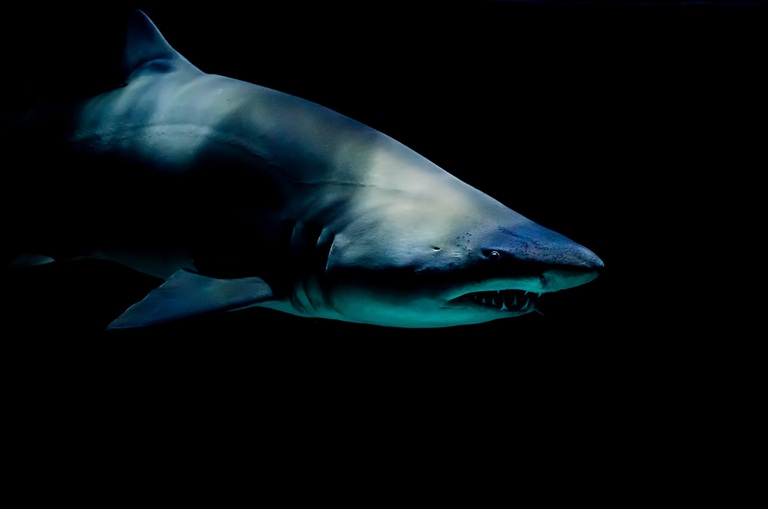https://www.lifegate.it/squali-positivi-cocaina-brasile
- |
A few days ago we celebrated the World Shark Day, to increase public awareness of the risks which, in the Mediterranean alone, threaten more than 50 percent of the species present with extinction.We didn't even have time to fully understand the alarm when, from the waters of the other hemisphere, another surprising piece of news had already reached us.
Thirteen sharks off the coast of Brazil were found positive for cocaine.And these aren't just any sharks.They are exemplars of Rhizoprionodon lalandii, known as “Brazilian Sharpnose Sharks”, or rather tubarão-bico-fino-brasileiro, a type of small size and give them coastal habits, considered a promising environmental sentinel and classified as vulnerable to extinction according to theInternational Union for Conservation of Nature (Iucn).
No one had ever thought of studying the effect of drugs on these animals.The research group coordinated by the biologist revealed the unique discovery Rachel Ann Hauser-Davis and the ecotoxicologist Enrico Saggioro, of theOswaldo Cruz Institute of Rio de Janeiro, which they performed the first study worldwide on the uptake of cocaine by cartilaginous fish, such as sharks.As much as it may seem like a strange idea, in fact, global cocaine consumption is increased exponentially in recent decades, as highlighted in the 2023 United Nations World drug report.Approximately 22 percent (4.8 million) of the estimated 22 million consumers worldwide reside in South America (data referring to 2021) and Brazil emerges as the second largest market of consumption in this area.Cocaine could therefore have a notable impact as environmental pollutant, especially in urban areas of developing countries where, the authors clarify, "the increase in substance use rates often coincides with the inadequacy of wastewater treatment infrastructures".
The effects of drugs on bony fish
Previous studies on marine organisms have already shown that cocaine can cause damage to vision And to hunting ability of some bony fish (sharks are instead cartilaginous), or it can have negative consequences on other organisms, such as mussels.Environmental levels of cocaine had been shown to be toxic to several aquatic organisms, including molluscs and crustaceans, while serious physiological damage, such as reduced cell viability, fragmentation, was found in zebrafish embryos (Danio rerio, a model species for embryology). of DNA, dysfunction of essential processes such as the organization of the cytoskeleton and the response to stress.However, nothing was known until now about elasmobranchs, that is, the animal group that includes sharks and rays.Generally they don't enjoy a good reputation, especially the first ones, but they perform a crucial role in marine ecosystems, both as predators and as sentinel species for environmental pollution.

There is a lot of cocaine in the waters off the coast of Rio de Janeiro
For the study, published on Science of the total environment, the researchers dissected in the laboratory thirteen specimens of sharpnose sharks accidentally caught by local fishermen between September 2021 and August 2023 in the waters off Recreio dos Bandeirantes, a neighborhood in the west of Rio de Janeiro.It is the fastest growing region of the city and also the most populous, with almost three million inhabitants.For them, and for their safety, the Oswaldo Cruz Institute carries out an extensive research effort to identify the presence of viruses, microorganisms and heavy metals in wastewater, potentially dangerous to human health.
But let's get back to the sharks.All thirteen specimens analyzed tested positive for cocaine.So that in muscles and liver of the animals the substance was found in concentrations much higher than those observed in any other marine animal.Not only.In 92 percent, traces of benzoylecgonine, the main metabolite of cocaine, which is produced in the user's liver after use and is then excreted in the urine.
The average concentration of cocaine in shark tissues, however, was three times higher to that of the metabolite.To explain this result, the researchers put forward the hypothesis that animals were overexposed to the pure substance, not assimilated into the bodies of humans or other organisms.A probable hypothesis, given that experts believe that cocaine reaches ocean waters directly through sewage systems and also through laboratories where the drug is produced illegally.Another possibility, yet to be confirmed, would concern the role of drug shipments abandoned at sea by traffickers.
What also surprised the researchers was the fact that cocaine was detected in higher concentrations in the muscle samples than in the liver.Especially in the specimens of female sex.
“For us it was a surprise, the presence in accumulation tissues could indicate the abundance of the substance in the marine environment.Sharks could become contaminated in various ways, both because they live in the coastal area near the discharges and because they feed on other contaminated animals, in a bioaccumulation process."
We do not yet know whether the assimilation of cocaine caused behavioral changes in sharks, as happens in humans after use, or any physical damage.But, explain Hauser-Davis:“We believe there could be an impact on growth, on the maturation and, potentially, on the fertility of sharks, precisely because the liver is involved in the development of embryos."
Is there a risk for humans too?
For humans, the authors reassure, there should be a risk minimized for the sporadic use of sea water, but it is necessary always pay attention to those shark fish species (such as dogfish) sold and consumed at the table.In short, cocaine is now considered an emerging environmental pollutant and the results of the study, which also offers valuable indications for the risk assessment for human health, demonstrate that drug consumption can have negative effects.Even in aquatic environments.
